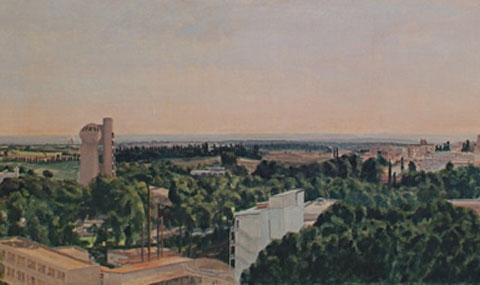Computational motor Control
Our work has involved the development of mathematical models and approaches. In those studies we have used various mathematical modelling approaches and theories. These included optimization theory and optimal control, studying movement invariance using group theory, and differential geometrical approaches using the moving fram method, Riemanean geometry, etc. Our original gocus has been on 2D movements. Given, however, the new and challenging computational problems that arise in the 3D case, such as the need to resolve kinematic redundancies, we particularly examined the possibility to generalize these different models to the 3D case and also studied how 3D movements map into joint rotations In particular, extending and expanding upon our earlier research studies, we have focused on the planning and execution of human (and primate) arm movements at both the hand and joint levels. A new major focus of our research in recent years has been on motor compositionality- investigating what elementary building blocks subserve the construction of arm and whole body movements. In the latter case, we have also analyzed behaviors such as human locomotion and the static postures and motions involved in the production and perception of bodily expression of emotion.
Action-Perception Coupling
Another focus of our research especially in recent years, has been on studying the interaction between motion production and perception under the assumption that similar principles subserve both action production and movement perception and recognition. In this work, we have focused on the perception of the motion of abstract visual stimuli (a moving dot or one or several objects) and full body biological movements. To gain better understanding of the brain mechanisms of the control of movement as well as the perception of motion we have also conducted brain imaging studies using fMRI and EEG recordings and more recently we started conduction Magneto-encephalogram (MEG) recordings which were simultaneously combined with motion capture studies
Controlling soft biological and robotics arms
Another focus of our work has been on the study of hyper-redundant flexible arms and specifically of octopus arm movements. New techniques and algorithms for their measurement, analysis, and modeling were developed, and this work was further integrated with research dealing with the control of hyper-redundant flexible robotic arms. In recent years we took part in several EU funded projects aimed at analyzing octopus movements including arm extension, reaching, swimming and crawling movements. We have also developed computer algorithms for controlling flexible soft robots. As part of this research, a soft robot inspired by the octopus was also designed by a team composed of several European teams. Other biorobotics research topics included human and robot grasping, development of algorithms for man-machine interface in telerobotics and studies of human and robot locomotion.
Movement disorders studies
Movements of healthy humans follow invariant kinematic rules that have been mathematically modeled as described above. These properties and models were used to detect abnormalities in movement disorders which show the motor and sensorimotor impairments. They encompass a spectrum of deficits in motor timing and speed and in the planning and production of voluntary reaching and rhythmic and non-rhythmic arm movements and full body locomotion. The movement disorders we have focused on include Parkinson's disease, Dystonia, and Autism. We have also studies motion perceptual deficts and conducted brain imaging studies in thse disorders.


